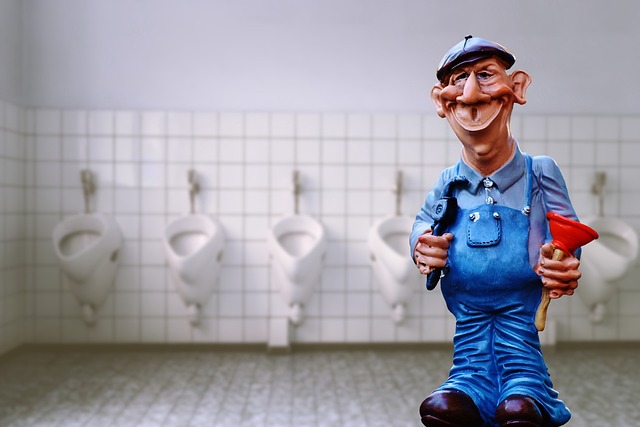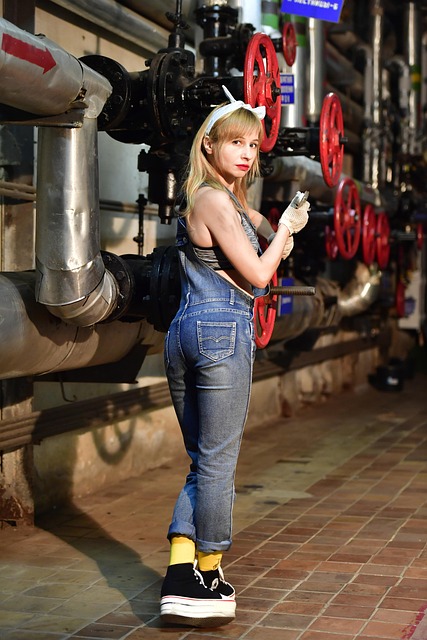Plumbing leaks, though often hidden, can be detected by sounds, water stains, or high bills. Traditional methods involve manual labor and potential damage. Modern technology like thermal imaging cameras and moisture sensors revolutionizes leak detection, offering faster, more accurate findings without extensive digging. High-definition cameras and listening devices allow plumbers to identify leaks in hard-to-reach areas, minimizing damage and costs through early intervention. These innovations enhance efficiency for both plumbers and clients alike.
“Uncover plumbing leaks with cutting-edge technology! This comprehensive guide explores innovative leak detection methods, empowering plumbers to identify issues efficiently. From traditional techniques to advanced tech, we delve into the world of leak finding. Discover how cameras and listening devices transform plumbing inspections. Visualize problems through camera inspection and harness sound’s power with listening devices. Integrate these tools for a powerful, all-encompassing approach to detecting leaks, ensuring swift resolution.”
- Understanding Plumbing Leaks: Common Signs and Causes
- Traditional Detection Methods vs. Advanced Technology
- The Role of Cameras in Visual Inspection and Leak Identification
- Listening Devices: Uncovering Leaks Through Sound Waves
- Integrating Camera and Listening Device Technology for Comprehensive Leak Detection
Understanding Plumbing Leaks: Common Signs and Causes

Plumbing leaks, while often unseen, can be detected through various signs and symptoms. As a homeowner or tenant, it’s crucial to be aware of these indicators to prevent costly damage and unnecessary water wastage. Common signs of plumbing leaks include persistent dripping sounds from faucets or pipes, unexplained water bills, and visible water stains on walls or ceilings. These hints often point towards broken fixtures, old pipes, or faulty valves.
The underlying causes of plumbing leaks are multifaceted. Age is a significant factor; older pipes naturally deteriorate faster due to corrosion and wear. Other reasons include poor installation, freezing temperatures causing pipe burst, or extreme pressure buildup within the plumbing system. A professional plumber can help identify these issues through inspection and employ effective leak detection methods using cameras or listening devices to pinpoint problem areas.
Traditional Detection Methods vs. Advanced Technology

In the realm of leak detection, traditional methods have long relied on the expertise of plumbers, who use their skills and tools like pipe inspection cameras and listening devices to track down sources of leaks. These methods, while effective, often involve extensive manual labor, time-consuming processes, and potential damage to property.
Advancements in technology, however, have brought about innovative solutions that surpass conventional techniques. Modern leak detection systems employ sophisticated technology such as thermal imaging cameras and advanced moisture sensors, enabling faster, more accurate identifications of leaks without the need for extensive digging or disruption to structures. These game-changers streamline the process, ensuring efficient troubleshooting and reduced costs for both plumbers and their clients.
The Role of Cameras in Visual Inspection and Leak Identification

Cameras play a pivotal role in the arsenal of any skilled plumber when it comes to detecting leaks, especially in hard-to-reach or hidden areas. By utilizing high-definition cameras equipped with advanced lighting systems, plumbers can peer into pipes, walls, and other enclosed spaces to identify potential leak sources. This visual inspection method is invaluable for early detection, as it allows professionals to pinpoint the exact location of a leak before it causes significant damage.
With the help of real-time video feed, plumbers can analyze every inch of a plumbing system, detecting even the smallest anomalies that might indicate a leak. This technology enables them to make informed decisions, recommend appropriate repairs, and ensure long-lasting efficiency in both residential and commercial settings. By combining visual inspection with their expertise, plumbers can offer comprehensive solutions tailored to each unique situation.
Listening Devices: Uncovering Leaks Through Sound Waves

Plumbers often rely on listening devices to detect leaks, utilizing sound waves to uncover hidden issues that may remain invisible to the naked eye. These devices convert sounds into electrical signals, allowing plumbers to pinpoint their source with precision. By placing these listening devices in strategic locations, such as near pipes or under floors, professionals can detect faint hisses or drips indicative of a leak.
This non-invasive method is particularly useful for identifying leaks in hard-to-reach areas or behind walls and floors. Plumbers can quickly assess the situation, determine the extent of damage, and take immediate action to repair the leak, minimizing potential water damage and associated costs.
Integrating Camera and Listening Device Technology for Comprehensive Leak Detection

In the world of plumbing, leak detection has evolved significantly with the integration of advanced camera and listening device technology. These innovative tools empower plumbers to navigate complex scenarios, ensuring comprehensive and accurate leak identification. By combining visual and auditory cues, professionals can now detect leaks hidden behind walls, under floors, or within intricate piping systems.
Through the use of high-definition cameras equipped with infrared capabilities, plumbers can peer into inaccessible areas, uncovering potential leak sources. Simultaneously, listening devices amplify subtle sounds, such as dripping water or unusual noises, that might otherwise go unnoticed. This multi-sensory approach allows for a more thorough inspection, enabling efficient troubleshooting and repair, ultimately saving time and resources for both plumbers and their clients.
In conclusion, a modern plumber’s toolkit should include advanced leak detection technologies like cameras and listening devices. These innovative methods offer more accurate and efficient solutions compared to traditional practices. By combining visual inspection with sound wave analysis, plumbers can now pinpoint leaks faster and with greater precision. This integrated approach not only saves time but also reduces damage and waste, ensuring a comprehensive and effective leak detection service.
